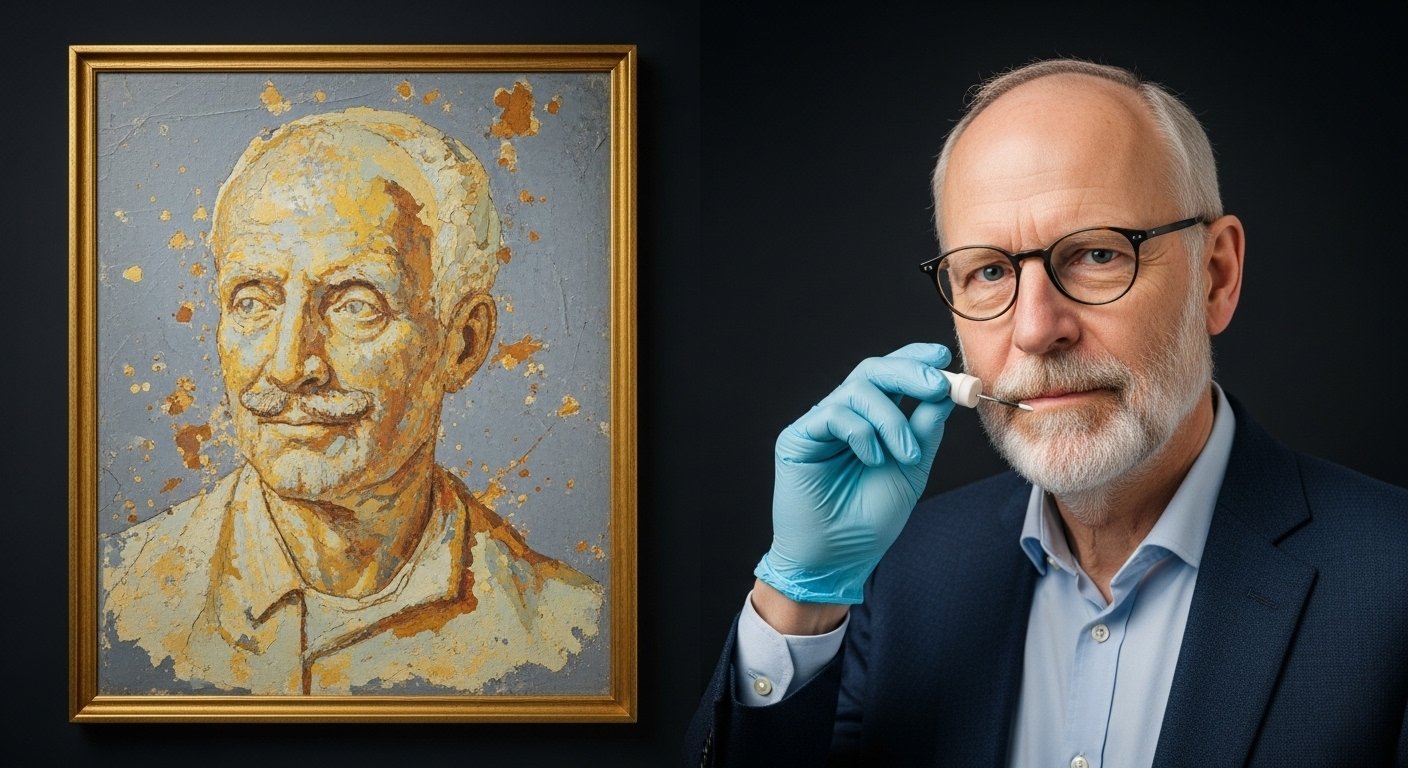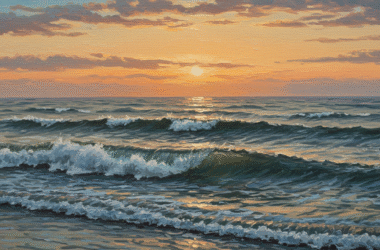In the evolving intersection of art and science, few names have made as significant an impact as Jeroen Dik. A Dutch researcher, art conservator, and professor, Jeroen Dik has revolutionized the way we understand, analyze, and preserve masterpieces from centuries past. His groundbreaking work in imaging technology, materials science, and cultural heritage preservation has transformed how museums and historians uncover hidden layers of artistic history.
By merging advanced scientific tools with artistic expertise, Jeroen Dik has given the world a new lens through which to study some of history’s most iconic artworks. His efforts have revealed forgotten sketches beneath famous paintings, uncovered original techniques used by legendary artists, and contributed to the global effort to safeguard cultural treasures for future generations.
Early Life and Education
Jeroen Dik was born in the Netherlands, a country with a rich artistic tradition that includes masters like Rembrandt and Vermeer. Growing up in such a culturally vibrant environment, it’s not surprising that he developed a fascination with both art and science early in life.
After completing his initial studies, Jeroen Dik pursued higher education in materials science and chemistry. This unique academic path laid the foundation for his later work, allowing him to bridge the gap between scientific analysis and artistic interpretation. His education gave him the technical skills to understand how pigments, binders, and materials interact — a crucial knowledge base for examining centuries-old artworks.
You Might Also Like: Bagru
He later earned a Ph.D. from Delft University of Technology, where he specialized in studying historical paint materials and their degradation processes. This work sparked his long-term commitment to art conservation and research, combining scientific precision with cultural passion.
Career and Academic Achievements
Today, Jeroen Dik serves as a professor at Delft University of Technology in the Department of Materials Science and Engineering. His work focuses on cultural heritage science, a field that applies scientific methods to study and preserve art.
His research team collaborates with leading museums such as the Rijksmuseum, the Mauritshuis, and international institutions across Europe and the United States. Together, they employ advanced imaging technologies, such as X-ray fluorescence (XRF), hyperspectral imaging, and 3D scanning, to analyze the physical and chemical structures of artworks.
One of the most remarkable aspects of Jeroen Dik’s career is how he brings together scientists, conservators, and art historians. This multidisciplinary approach ensures that findings are both scientifically accurate and historically meaningful.
The Power of Technology in Art Analysis
Traditional art conservation often relied on visible observation and manual techniques. However, modern technology has transformed this process. Jeroen Dik was among the first to apply high-resolution scanning and X-ray imaging to uncover what lies beneath the visible layers of paint.
Using X-ray fluorescence, his team can detect different chemical elements in pigments, allowing them to reconstruct how a painting was originally created and even altered over time. For example, through this method, they can identify pigments that have faded, changed color, or been replaced during restoration efforts.
Another important contribution from Jeroen Dik’s research is the development of mobile scanning equipment. This allows scientists to perform analyses directly in museums or galleries without transporting fragile masterpieces. These portable tools have made it possible to study some of the world’s most famous artworks in situ, providing valuable data while minimizing risk.
Uncovering Hidden Paintings
One of the most fascinating outcomes of Jeroen Dik’s research is the discovery of hidden compositions beneath well-known paintings. Artists often reused canvases or changed their designs mid-creation, leaving behind layers of art that were previously invisible.
In 2018, Jeroen Dik and his team made headlines by revealing an earlier portrait beneath one of Rembrandt’s famous works. This discovery provided new insights into the artist’s creative process and experimentation.
Similar investigations have uncovered hidden sketches under paintings by Van Gogh, Vermeer, and other European masters. Each finding not only deepens our understanding of individual artists but also enriches our knowledge of artistic techniques during specific historical periods.
Collaboration with Museums and Institutions
Jeroen Dik has built an international reputation for his collaborative work with museums, universities, and cultural institutions. His partnerships have led to several major exhibitions where science meets art, showing visitors the invisible stories beneath famous paintings.
For instance, collaborations with the Rijksmuseum have resulted in the “Operation Night Watch” project, where a team of experts uses cutting-edge imaging to study Rembrandt’s masterpiece in extraordinary detail. Through this and similar projects, Jeroen Dik’s research has become a cornerstone of modern conservation practices.
He also contributes to training programs and workshops, helping a new generation of conservators and scientists understand how to integrate advanced tools into their preservation efforts.
The Impact on Art Conservation
Before innovations like those pioneered by Jeroen Dik, art conservation was often limited to surface-level cleaning or repairs. Today, thanks to his methods, conservators can make informed decisions about how to preserve and restore artworks.
By identifying the precise composition of pigments and varnishes, conservators can predict how materials will age and react to environmental changes. This information helps museums control humidity, light exposure, and temperature to protect their collections.
Moreover, his research aids in verifying the authenticity of artworks. With imaging and chemical analysis, experts can distinguish genuine masterpieces from forgeries or later reproductions. This has significant implications for both art history and the global art market.
Innovations and Publications
Over the years, Jeroen Dik has authored numerous scientific papers, reports, and articles that have shaped the field of cultural heritage science. His publications cover topics such as pigment degradation, imaging technology, and the development of new analytical tools.
He has also contributed to collaborative projects with technology companies to improve scanning precision and data processing. These partnerships have produced innovations that benefit not just art research but also other industries that rely on imaging technology.
His commitment to open science is another defining trait. By sharing data and methodologies, Jeroen Dik ensures that his work has a lasting impact on the academic and conservation communities.
Educator and Mentor
Beyond research, Jeroen Dik plays a crucial role as an educator. His courses at Delft University of Technology inspire students from diverse backgrounds — from chemistry and physics to art history and engineering.
He encourages interdisciplinary learning, showing that art and science are not opposing worlds but complementary forces that can unlock new understanding. Many of his students have gone on to successful careers in museums, research institutions, and conservation labs worldwide.
Through mentorship, Jeroen Dik continues to shape the future of art preservation, ensuring that scientific innovation remains at the heart of cultural heritage.
Bridging the Past and Future
What makes Jeroen Dik’s work particularly compelling is how it bridges the gap between centuries-old art and twenty-first-century technology. His research demonstrates that understanding the past requires modern tools and that preserving history demands constant innovation.
From using nanotechnology to analyze pigment particles to applying AI for pattern recognition in paintings, his work continues to push boundaries. Each new discovery not only reveals hidden beauty but also redefines how humanity connects with its cultural roots.
In a world where digital transformation touches every industry, Jeroen Dik ensures that art — one of humanity’s oldest expressions — evolves alongside it.
Awards and Recognition
Over his career, Jeroen Dik has received multiple awards for his scientific and cultural contributions. His innovative approach to heritage science has been recognized by academic institutions, art councils, and scientific organizations worldwide.
His achievements highlight the growing importance of collaboration between disciplines. In bridging the gap between chemistry and creativity, Jeroen Dik embodies the spirit of modern innovation — where data and art coexist to tell stories of human ingenuity.
Legacy and Continuing Influence
As a leading figure in art conservation science, Jeroen Dik continues to inspire researchers, artists, and museum professionals around the world. His work has not only changed how we study paintings but also how we perceive the relationship between art and technology.
The legacy of Jeroen Dik lies in the tools he has created, the discoveries he has led, and the generations of conservators he has inspired. His commitment ensures that future scholars will be equipped with both the curiosity and the scientific precision needed to safeguard cultural heritage.
Conclusion
Jeroen Dik stands at the forefront of a movement that blends art, history, and science into one powerful discipline. His pioneering use of imaging technologies, collaboration with major museums, and dedication to education have reshaped the field of art conservation.
Thanks to his innovations, the hidden layers of masterpieces continue to come to light — revealing the creativity, experimentation, and humanity of artists long gone. Through his work, Jeroen Dik not only preserves art but also deepens our understanding of it, ensuring that the beauty of the past remains vibrant for generations to come.






